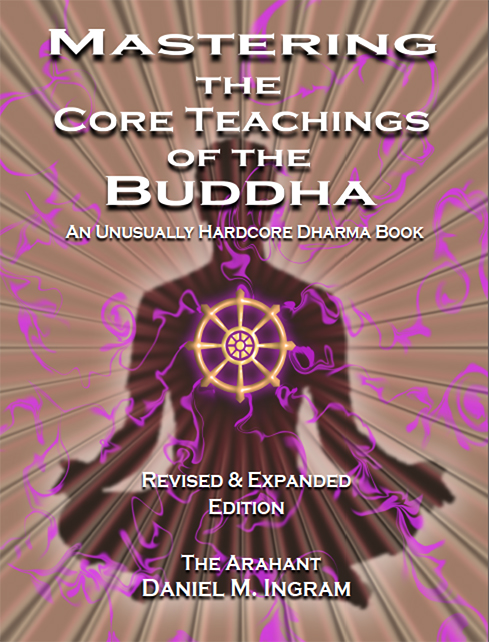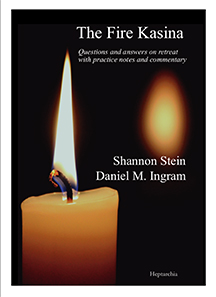23. Right Thought and the Augean Stables
← 22. Harnessing the Energy of the Defilements | 24. From Content to Insight →
There is a lot of emphasis on “right thought” and suppressing or uprooting the mental “defilements” in Buddhism, as well as training in morality—“right speech”, “right action”, and so on. As these are agendas for what happens in our ordinary reality, they are aspects of training in morality. This practice of being mindful of our thoughts and actions is helpful only when not distorted and misunderstood. When this becomes the predominant thrust of our practice, involving images of self-perfection that deny the basic realities of human existence and the inevitable dark sides of our minds and lives, trouble is guaranteed.
[There is a solid argument that the part of the noble eightfold path that in Pali is “samma ditthi” should be translated “right understanding”, referring to understanding of the four noble truths; and, likewise, for “samma sankappa” to be translated as “right intention”, referring to intention towards renunciation, goodwill, and harmlessness. I use the word “right” here because “right thought” is a common concept in Buddhist circles, and to address the concept of how “right” might apply to “thought”.]
The Buddha did speak at length about restraining negative emotions and actions. He was making a very important point, but he didn’t stop there, since he also advocated that people go on to cultivate concentration and then insight, to temporarily quiet and eventually overcome the fundamental delusions that drive our noisy minds. This same point would apply to psychotherapy: it can be useful, and I personally have benefitted from it, but to access the end of fundamental suffering we must go much deeper.
Sutta 20 in The Middle Length Discourses of the Buddha (MN 20) is called “The Removal of Distracting Thoughts”. In it, the Buddha admonishes his followers to deal with unskillful, evil, unwholesome, or useless thoughts in the following ways:
• If the meditator is paying attention to something that is causing these unskillful thoughts, then he or she should give attention to something wholesome that does not produce unskillful thoughts.
• If this fails, then the meditator should reflect on the danger in those unskillful thoughts and thus try to condition him or herself not to think such thoughts in this way.
• If this fails, then the meditator should try to ignore those thoughts and not give them any attention.
• If this fails, he or she should give attention to quieting the mind and to stilling these thoughts.
• If this fails, the meditator should bear down with full will and “crush mind with mind”, forcing the thoughts to stop with unremitting and unrestrained effort.
The Buddha also recommended the formal concentration practices called the brahma viharas, or “divine abodes”, which are to be cultivated toward all sentient beings: (1) loving-kindness; (2) compassion; (3) empathic joy; and (4) equanimity (see Lovingkindness: The Revolutionary Art of Happiness, by Sharon Salzberg; or Training the Mind, by Chögyam Trungpa Rinpoche). I give some basic instructions for the brahma viharas towards the end of this book.
Those familiar with cognitive restructuring will notice great similarities between this approximately 2,500-year-old approach and more contemporary techniques. These can help develop morality and attenuate the hindrances that cause distraction and poor concentration, as well as begin to create better mental and personal habits. However, this can have its problems if not understood in a realistic and clear way.
A subtle but incorrect modification of these techniques can create significant internal conflict, as can failing to understand the limitations of such techniques. The subtle modification that is not recommended but all too common is the following: the meditator substitutes feelings of self-judgment or self-loathing for the thoughts they feel are unskillful. This results from only seeing the ignorance side and not the compassion side of intentions and thoughts. It can produce some extremely detrimental results, as well as highly neurotic and repressed individuals who are in basic denial of their actual humanity and heart. It can produce meditators who are quite testy, bitter, tight, judgmental, puritanical, deeply depressed, prone to bullying, and generally unpleasant to be around. This is one extreme.
The other extreme tends to come when people only focus on the compassion side of their emotions and not the confusion and suffering that can be mixed in with them. Aspects of the late 1960s come to mind. This error can lead to extreme misunderstandings and distortions of tantra and tantric teachings, unhealthy Epicureanism, addictions, and general debauchery that are simply destructive of self and others. While this may seem all fun and free for a while, the consequences tend to be as bad (or worse) as can be expected from behavior that dismisses the most elementary aspects of causality. Thus, a sophisticated examination of our hearts, desires, aversions, and confusions can help sort out what aspects of these are skillful and worth cultivating and what aspects are unhelpful and worth abandoning by the various available methods.
The last problem comes from not understanding that the only way to bring some lasting relief from persistent and sometimes uncontrollable thoughts is to become awakened. Until this happens, even in the early stages of awakening, the poor perception of various difficult patterns of emotions will continue to produce all kinds of unhelpful thoughts and mind noise that are easy to get duped by and snagged in. Thus, while training in thought restraint can be very helpful and is highly recommended, it should not be viewed as being more powerful than it is. Remember that training in morality and concentration does not produce awakening without training in insight. This point is mentioned again and again, but somehow continues to be overlooked.
A useful analogy is that of the Augean Stables. The story goes that one of Hercules’ tasks was to clean the Augean Stables. These housed a very large number of cattle that continually produced great heaping mounds of dung. He tried again and again with superhuman strength to remove them, but there were too many cattle producing too much poop too fast for even Hercules to keep up. As soon as he had cleaned one area, the other areas became piled high with manure, and so he despaired. However, when he diverted a great river through the stables, it flushed clean the whole of the stables at once, and his task was accomplished. While the sensations that make up our reality are still misunderstood, we can feel a bit like Hercules before he diverted the river. This is par for the course and perfectly normal.
Awakening itself is a sudden occurrence, but the cultivation that leads to that initial awakening is gradual and proceeds in relatively predictable stages (detailed in Part Five). For more information on this topic, I recommend the excellent works of Chinul, presented in Tracing Back the Radiance as translated by Robert Buswell. At each progressive stage, certain unhelpful patterns of identifying with experience are forever eliminated or overcome, sort of like channeling a river through one part of the stables, but many more remain until awakening. Thus, the mind becomes progressively clearer, more spacious, more still, and those unskillful thoughts and other sensations that we do still subtly identify with and that do still arise are more likely to be caught and monitored before they can do damage.
Thus, those who wish for the end of suffering should strive to be kind, or at least deeply non-harming, to stabilize the mind, and to carefully and precisely understand the actual truth of their experience in each moment in a way that goes beyond content.
← 22. Harnessing the Energy of the Defilements | 24. From Content to Insight →

